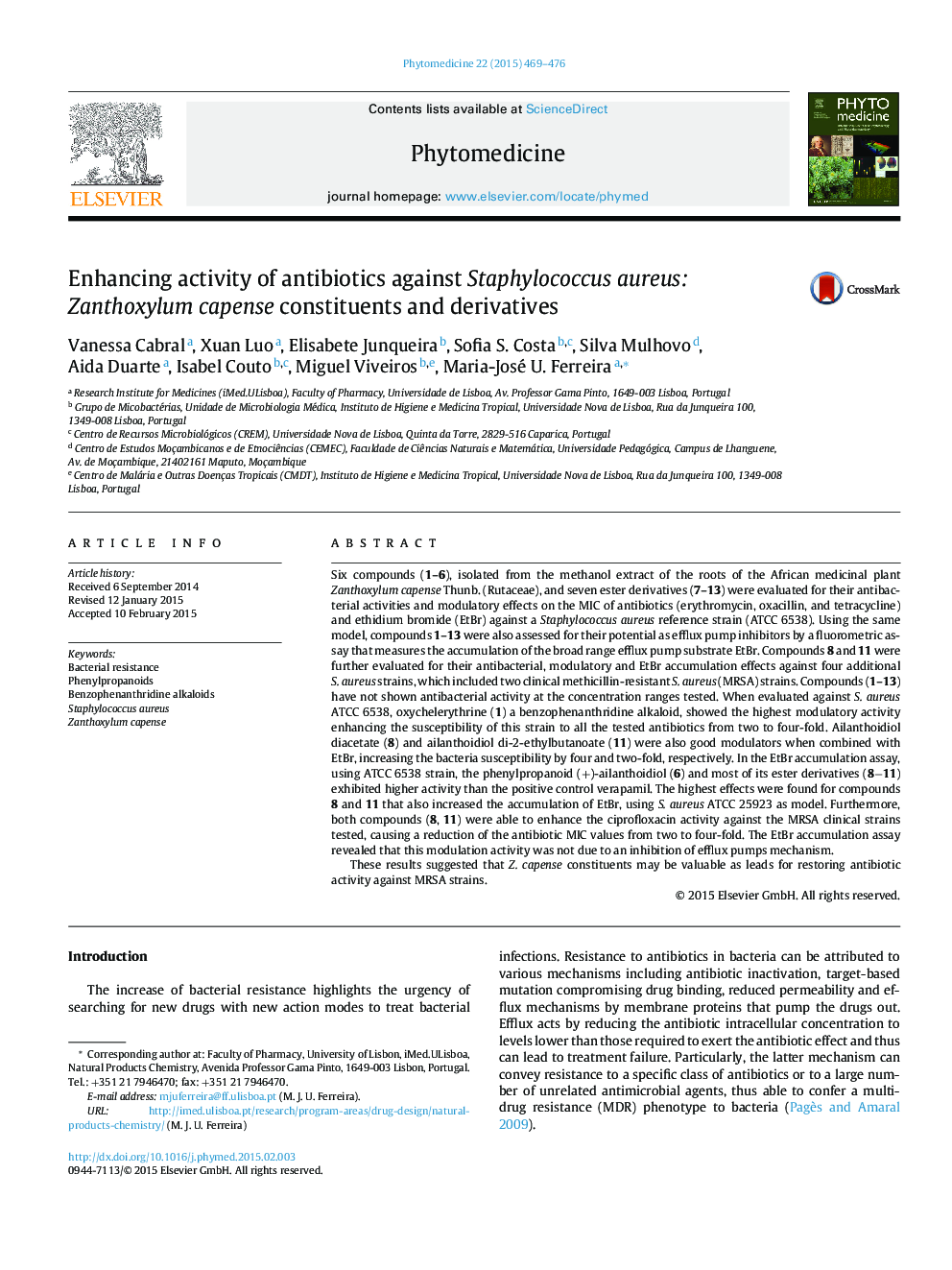| کد مقاله | کد نشریه | سال انتشار | مقاله انگلیسی | نسخه تمام متن |
|---|---|---|---|---|
| 2496404 | 1116134 | 2015 | 8 صفحه PDF | دانلود رایگان |

Six compounds (1–6), isolated from the methanol extract of the roots of the African medicinal plant Zanthoxylum capense Thunb. (Rutaceae), and seven ester derivatives (7–13) were evaluated for their antibacterial activities and modulatory effects on the MIC of antibiotics (erythromycin, oxacillin, and tetracycline) and ethidium bromide (EtBr) against a Staphylococcus aureus reference strain (ATCC 6538). Using the same model, compounds 1–13 were also assessed for their potential as efflux pump inhibitors by a fluorometric assay that measures the accumulation of the broad range efflux pump substrate EtBr. Compounds 8 and 11 were further evaluated for their antibacterial, modulatory and EtBr accumulation effects against four additional S. aureus strains, which included two clinical methicillin-resistant S. aureus (MRSA) strains. Compounds (1–13) have not shown antibacterial activity at the concentration ranges tested. When evaluated against S. aureus ATCC 6538, oxychelerythrine (1) a benzophenanthridine alkaloid, showed the highest modulatory activity enhancing the susceptibility of this strain to all the tested antibiotics from two to four-fold. Ailanthoidiol diacetate (8) and ailanthoidiol di-2-ethylbutanoate (11) were also good modulators when combined with EtBr, increasing the bacteria susceptibility by four and two-fold, respectively. In the EtBr accumulation assay, using ATCC 6538 strain, the phenylpropanoid (+)-ailanthoidiol (6) and most of its ester derivatives (8−11) exhibited higher activity than the positive control verapamil. The highest effects were found for compounds 8 and 11 that also increased the accumulation of EtBr, using S. aureus ATCC 25923 as model. Furthermore, both compounds (8, 11) were able to enhance the ciprofloxacin activity against the MRSA clinical strains tested, causing a reduction of the antibiotic MIC values from two to four-fold. The EtBr accumulation assay revealed that this modulation activity was not due to an inhibition of efflux pumps mechanism.These results suggested that Z. capense constituents may be valuable as leads for restoring antibiotic activity against MRSA strains.
Figure optionsDownload high-quality image (225 K)Download as PowerPoint slide
Journal: Phytomedicine - Volume 22, Issue 4, 15 April 2015, Pages 469–476